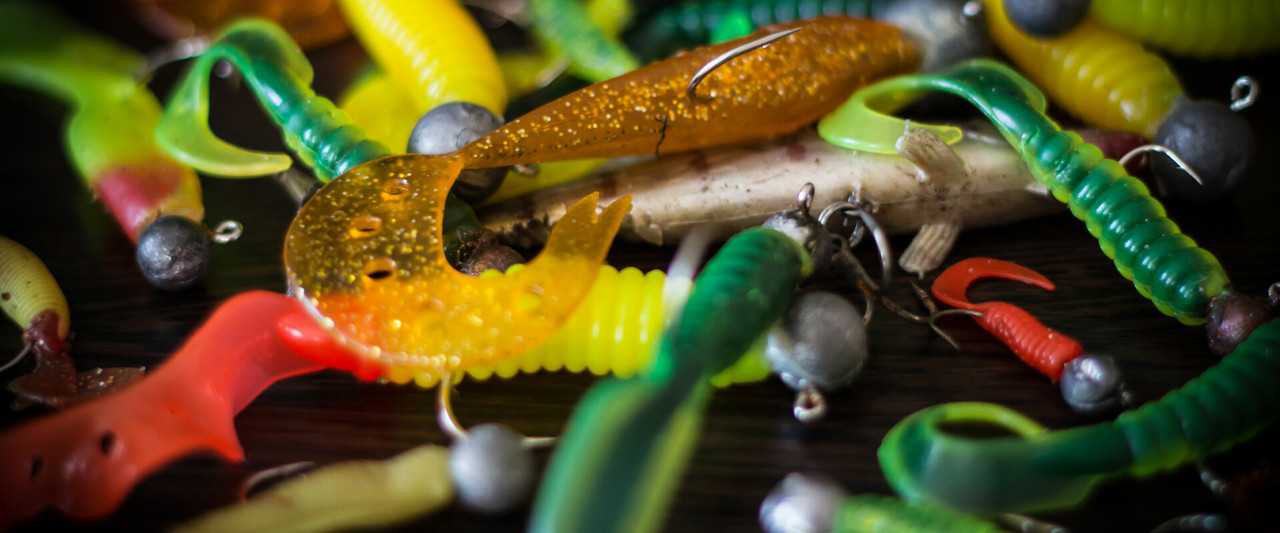A Comprehensive Guide to Soft Plastic Lures
Soft plastic lures have fundamentally changed the way we fish. Their lifelike action and incredible versatility make them a must-have in any angler's tackle box. However, with countless shapes, sizes, and brands available, choosing the right one can be a challenge. This guide will break down the key types to help you make the perfect choice for your next trip.
A Note From Our Local Experts
"Whether we're casting paddle-tail shads for flathead in the Shoalhaven River or working grub-style plastics for bream around the Lake Illawarra bridge, soft plastics are a constant in our tackle bags. Their versatility is their greatest strength. By simply changing the jig head weight or the lure profile, you can adapt to any depth or target species. They are, without a doubt, one of the most effective tools for the modern Australian angler."
- The Team at Fishing Tackle Shop (Ocean Storm)
A Guide to Soft Plastic Lure Types
Different situations call for different lure profiles. Here’s a breakdown of the most common styles and what they’re best for:
- Paddle Tail Lures: Often shaped like a fish (shads), these plastics have a boot-shaped tail that creates a distinct, vibrating swimming action on a steady retrieve. They are a go-to for covering ground and are incredibly effective on predators like Flathead, Mulloway, Barramundi, and Snapper.
- Grub & Curly Tail Lures: These feature a long, ribbon-like tail that undulates with even the slightest movement. They are a superb choice for a slower retrieve or when the bite is tough, making them a favourite for Bream, Bass, and Redfin.
- Worm & Stick Baits: With their slender, minimalist profile, these lures are perfect for finesse presentations. They can be rigged in a huge variety of ways and are deadly on a wide range of estuary and freshwater species.
- Creature Baits & Prawn Imitations: Designed to mimic crustaceans and other invertebrates, these plastics are irresistible to fish that feed along the bottom. They are an essential choice for Bream, Flathead, and any species that preys on prawns.
Matching the Right Jig Head
While some soft plastics can be fished unweighted, most require a jig head to provide casting weight and get the lure into the strike zone. Jig Heads are as crucial as the lure itself.
- Weight: The golden rule is to use the lightest jig head you can get away with while still maintaining contact with the bottom. Lighter weights (e.g., 1/16oz) allow for a more natural sink rate, which is often key for fussy fish like Bream. Heavier weights (e.g., 1/4oz and above) are needed for deeper water or stronger currents.
- Hook Size: The hook should be large enough to secure a solid hook-up but not so large that it impedes the lure's action. A good starting point is to have the hook point exit the plastic around one-third to halfway down its body.
Top Soft Plastic Lure Brands
The market is filled with incredible brands, each with their own unique technologies. Names like Berkley Gulp, with its powerful scent infusion, and Z-Man, with its incredibly durable 10X Tough ElaZtech construction, have become household names. Other brands like Squidgy, Keitech, Chasebaits, and ProLure also offer sensational, high-performance products that are proven fish-catchers in Australian waters.
Frequently Asked Questions
What's the best all-round soft plastic to start with?
A 3-inch paddle tail shad in a natural or baitfish colour is arguably the most versatile soft plastic you can own. It will catch everything from Flathead and Bream in the salt to Bass and Yellowbelly in the fresh.
How do I choose the right colour?
A simple rule is "bright for bright, dark for dark." On bright, sunny days, natural and translucent colours often work best. On overcast days or in dirty water, brighter colours (like chartreuse or pink) or dark, solid colours (like black or motor oil) can be more effective.
Do I really need a fluorocarbon leader?
Yes. Most soft plastic fishing is done with highly visible braided mainline. A near-invisible fluorocarbon leader is essential for presenting your lure naturally and preventing wary fish from being spooked. It also provides crucial abrasion resistance against rocks, oysters, and fish teeth.



